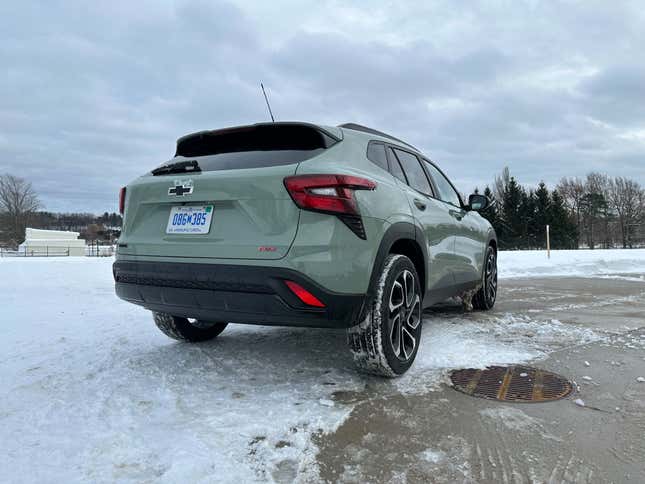I just gave back the Chevrolet Trax I’d been borrowing for the last week. I didn’t put a ton of miles on it because it was equipped with all-season tires and it was blizzarding pretty much the whole time I had it. Plus, we’ve already reviewed the Trax at least twice, and Andy did a video about it last week.
But I did crawl all over it, and drove it as conditions allowed. While I was driving it, I must have pulled the Monroney out of the passenger seat half a dozen times to confirm that the car I was driving was indeed priced at $25,590 plus a destination charge of $1,095, you know, for destination. I kept thinking it must have started at around $25,000, and that the one I was driving would be just under $30,000.

But, the Trax actually starts at $20,400 plus destination for a total of $21,495—less than half the of the average car transaction in the U.S.
I don’t write about every press car I get (sorry, automakers), between covid and my being away from auto journalism for a minute, I have some catching up to do when it comes to familiarizing myself with what’s being sold these days. But I did feel compelled to talk about this one, if briefly.
Building a good car for the top of the market isn’t nearly as hard as building a good car to a certain price point — you have to be smart about where you put the expensive stuff. Once in a while, a car company manages to walk that tightrope. This is one of those cars.

So, where do they save money here? The most obvious place is the powertrain. There’s no all-wheel drive option, but with a set of snow tires, there’s no reason why a crossover like this needs another set of driven wheels anyway. There’s one engine option, a 1.2-liter turbo and one transmission, a conventional 6-speed automatic. The engine is not exactly silky, or nice to listen to, but Chevy seems to have come to the correct conclusion that people are not buying crossovers for their smooth, sonorous engines. There are some places in the interior where you get hard, textured plastic, but the big secret about car interiors is that everyone uses a lot of the same stuff. The trick is putting the nice stuff in the right place to create the impression of a nice interior. Chevrolet was once again, successful here.

That heated steering wheel is nice, the shifter and boot are nice. The seats are comfortable and look well-made, no goofy wrinkles or wonky stitching. The interior is well-designed. You could pack it with leather and wood, and it’d be a little nicer, but not enough to justify the increase in price. There’s even room for me in the back seat and a big luggage compartment.

Design is one of those things that doesn’t necessarily have to impact the price of a car. Inside and out, the Trax is about as handsome as small crossovers get, even managing to look lithe despite an overall increase in size over the previous Trax. Also, this Cacti Green is a nice color.
Crossovers are not my thing. I would never buy one. But for a number of reasons, including the fact that they comprise the bulk of most automaker lineups these days, I do find myself in a position to recommend one pretty frequently. This is a really compelling entry in a very competitive segment and it’s nice to be surprised by how cheap a car is for once.



